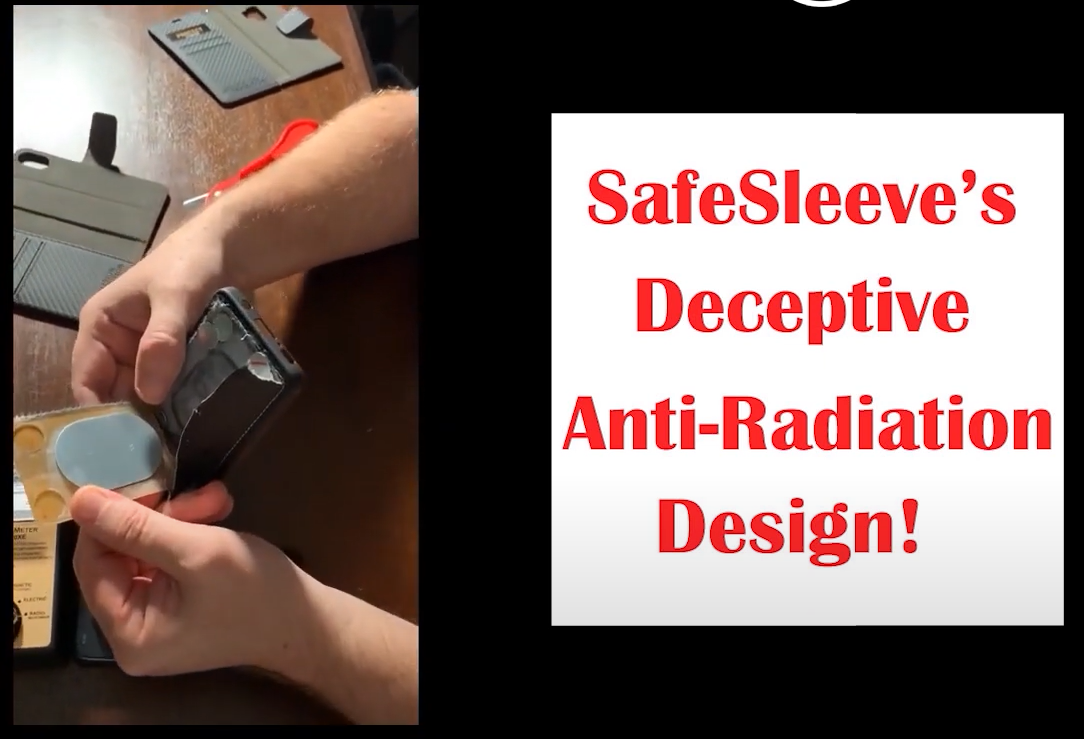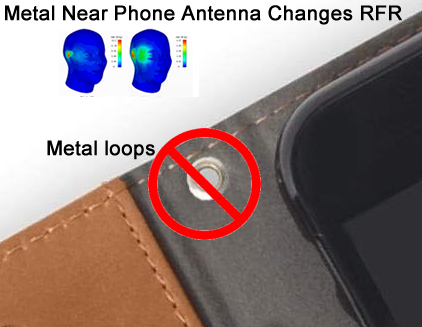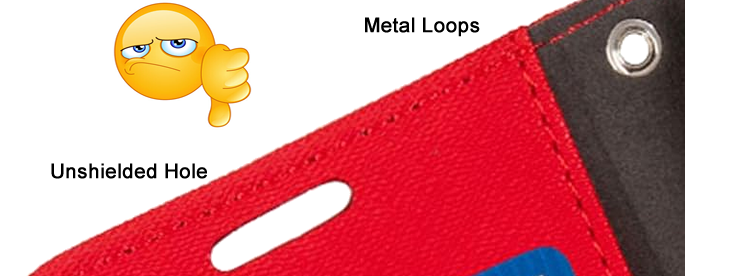How to Identify Who Sells Fake Anti-Radiation Phone Cases – The Red Flags
The Red Flags
For over 25 years, RF Safe Approved designs have consistently upheld the highest standards without compromise. Our commitment to your safety is unwavering: you’ll never find metal loops or metal plates for detachable functionality in our products. #RFSafe #RadiationProtection
RF Safe introduced the world to the use of anti-radiation phone cases in the 1990s. However, these cases that have copied RF Safe’s decades-old product design aren’t replicating the end result of safer consumers or providing the protection they claim. Let’s look into how to distinguish between genuine and fake anti-radiation phone cases, focusing on critical design flaws that compromise safety.
Red Flag #1: Detachable Designs with Metal and Magnets
The Issue: Phone cases with a magnetic detachable design often utilize large metal plates and magnets, which pose a significant problem.

How It Affects Your Phone: These metal parts can and will obstruct the phone’s antenna, leading to altered signal transmission. A blocked signal often prompts the phone to ramp up its radiation output to maintain connectivity with the cell tower. Cell Phone Users Beware: Study Finds Weak Signal Strength Can Increase Microwave Radiation Exposure 10,000-Fold.
Understanding the Implications: By obstructing your phone’s normal functionality, these cases can and will increase your radiation exposure, doing the opposite of what they promise.
Red Flag #2: Presence of Metal Loops
The Misconception: Some anti-radiation phone cases come equipped with metal loops for carrying straps, but this is a major design flaw.

The Science Behind It: Research indicates that metals can alter radiation patterns. For instance, metal eyeglass frames have been shown to affect the way radiation is absorbed by the body. Similarly, metal loops on phone cases can unpredictably alter the propagation of electromagnetic waves. If a manufacturer includes metal loops, it suggests a fundamental misunderstanding of electromagnetic fields (EMFs) and how mobile phones operate.
Expert Advice: Renowned initiatives like RF Safe advise against incorporating metal components in case designs which can affect microwave transmissions in a negative way. Such elements can interfere with a phone’s antenna and its radiation emission patterns.
Red Flag #3: Unshielded Speaker Holes
The Design Flaw: A common oversight in many anti-radiation cases is the presence of unshielded speaker holes. These unshielded areas can significantly compromise the case’s ability to shield against high-frequency radiation, particularly in the upper 5G spectrum.

The Science Behind It: As we progress to 5G and beyond, wavelengths become shorter. A case with a large, unshielded hole for the speaker in the front cover can’t effectively block these shorter wavelengths. The signals can easily pass through, rendering the shielding ineffective. This is especially concerning because these holes are often aligned with the ear canal, a part of the head not directly protected by the skull.
Red Flag #4: Unrealistic Claims of Protection
The Misleading Claim: Some anti-radiation cases tout a protection level of 99%. However, these claims can be very misleading and give a false sense of security.
Understanding the Reality: Even if a material can theoretically block 99% of radiation, it doesn’t equate to 99% protection in everyday use. RF Safe has never used a percentage to convey a level of protection in over 25 years. Protection is always dependent on the user, and RF Safe’s design is the most protective for reducing RF exposure when properly used. A protective anti-radiation phone case is not an alternative for distance but is a way to reduce exposure when distance isn’t an option.
Key Takeaways for Making a Safe Selection:
- Educate Yourself: A basic understanding of how anti-radiation materials work can guide your decision-making.
- Scrutinize the Design: Choose cases that utilize proven shielding materials and are designed to reduce exposure without compromising phone functionality.
- Avoid Designs with Metal Loops, Detachable Parts, and Unshielded Speaker Holes: These are clear indicators of a product that may not provide adequate protection.
- Consult Professionals: When in doubt, seek advice from RF safety experts in health or technology.
An anti-radiation phone case should reduce your exposure to EMF radiation, not introduce new hazards. Approach your choice with extreme caution, and do your research for products backed by science and safe design principles.







